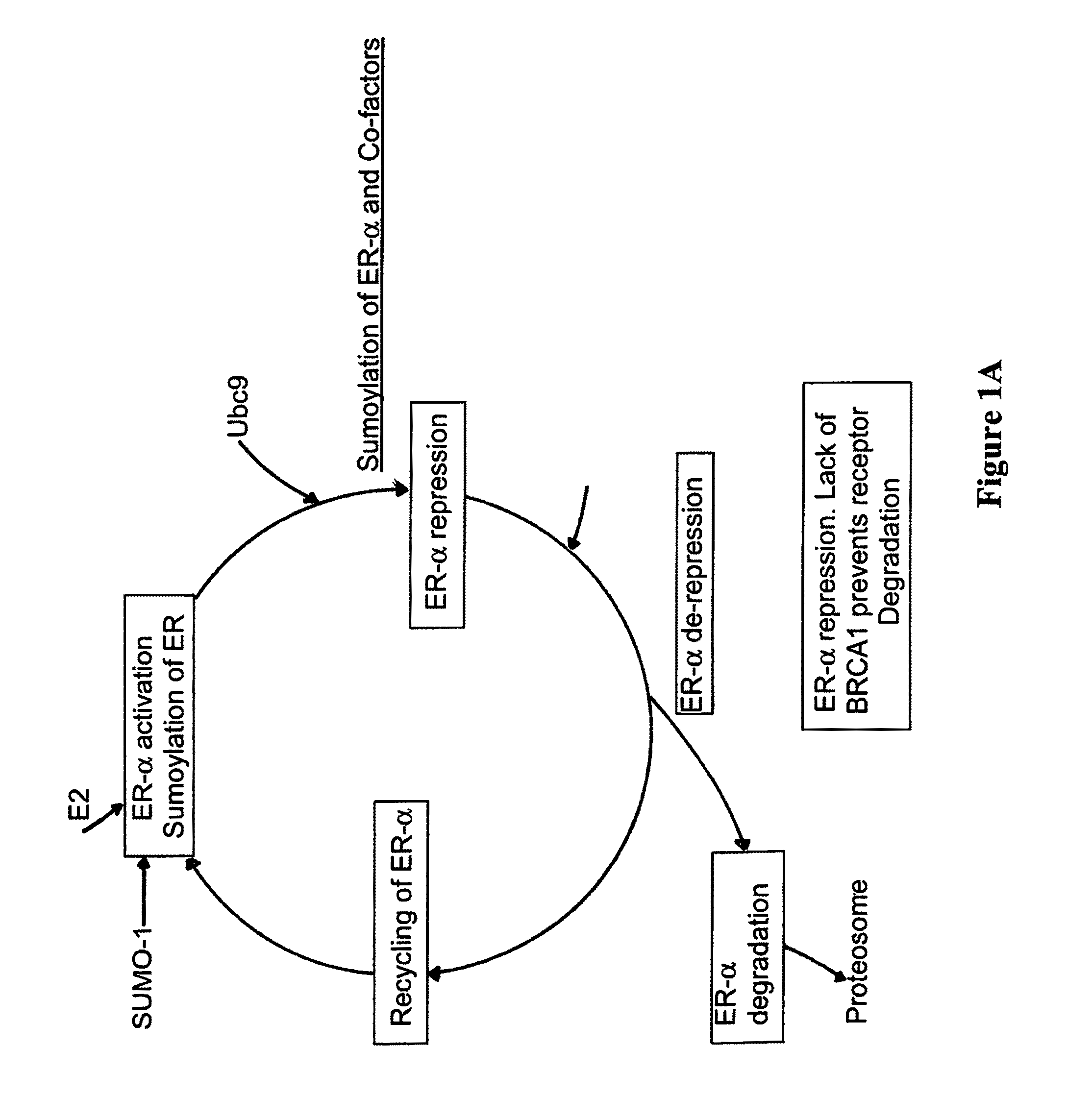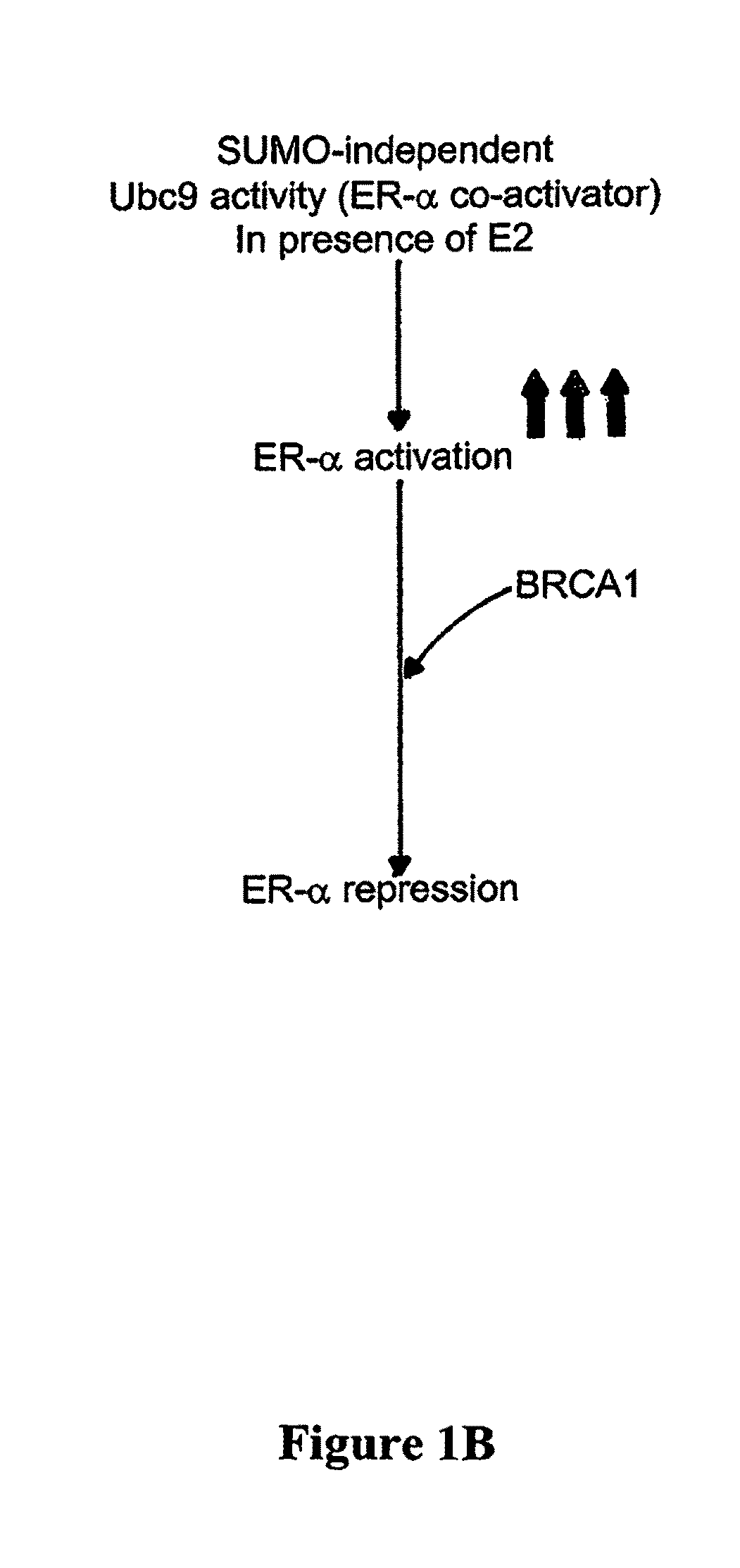BRCA1 function-based cellular assays
a cellular assay and function-based technology, applied in the field of tumor factor assays, can solve the problems of effective treatment of tn breast cancer, and achieve the effect of enhancing the degradation of er and preventing tumor developmen
- Summary
- Abstract
- Description
- Claims
- Application Information
AI Technical Summary
Benefits of technology
Problems solved by technology
Method used
Image
Examples
example
[0048]A study in which CAL-51, and ES-2 and PC-3 cells were transfected with empty pcDNA vector or with BRCA1a, were trypsinized, washed and suspended in sterile phosphate-buffered saline solution was done to determine their tumorigenicity suspension of 1×107 cells in a volume of 0.2 ml of PBS were injected subcutaneously above the hind leg of four to five week old female immuno deficient nude mice (Ncr-mu). The mice were examined for tumor development every week for up to six weeks. The tumors were allowed to grow to at least 1.5-2.0 cm in diameter before sacrifice.
[0049]To determine whether BRCA1a has an effect on Cal 51 / CCD160SSK tumor growth in vivo in nude mice, 1×107 Cal51 / CCD160SSK-pEGFP transfectants and CAL51 / CCD160SSK-EGFP-BRCA1a transfectants in the mid-log-growth phase are harvested by trypsinization and suspended in a volume of 0.2 ml of serum free culture medium. Harvested cells are injected subcutaneously above the hind leg of four to five week old female immune-defic...
PUM
| Property | Measurement | Unit |
|---|---|---|
| volume | aaaaa | aaaaa |
| size | aaaaa | aaaaa |
| genomic stability | aaaaa | aaaaa |
Abstract
Description
Claims
Application Information
 Login to View More
Login to View More - R&D
- Intellectual Property
- Life Sciences
- Materials
- Tech Scout
- Unparalleled Data Quality
- Higher Quality Content
- 60% Fewer Hallucinations
Browse by: Latest US Patents, China's latest patents, Technical Efficacy Thesaurus, Application Domain, Technology Topic, Popular Technical Reports.
© 2025 PatSnap. All rights reserved.Legal|Privacy policy|Modern Slavery Act Transparency Statement|Sitemap|About US| Contact US: help@patsnap.com



